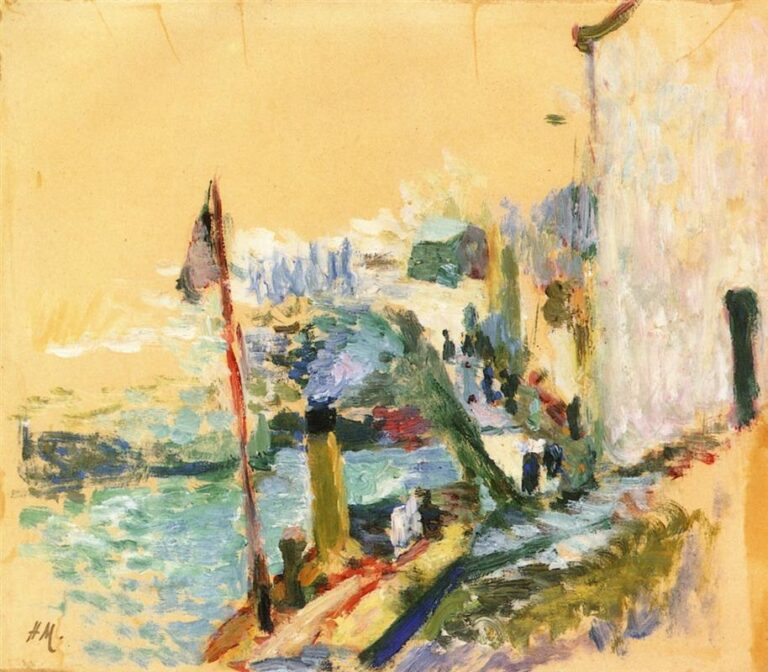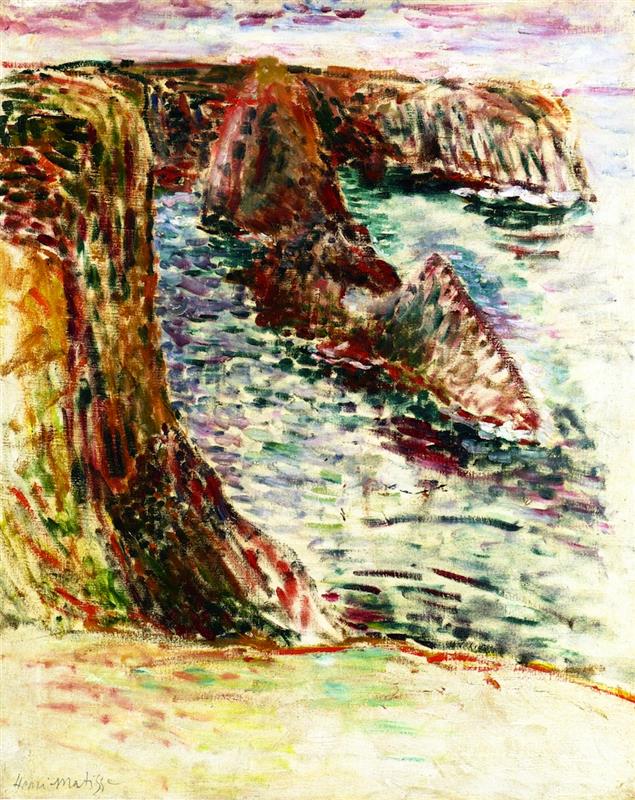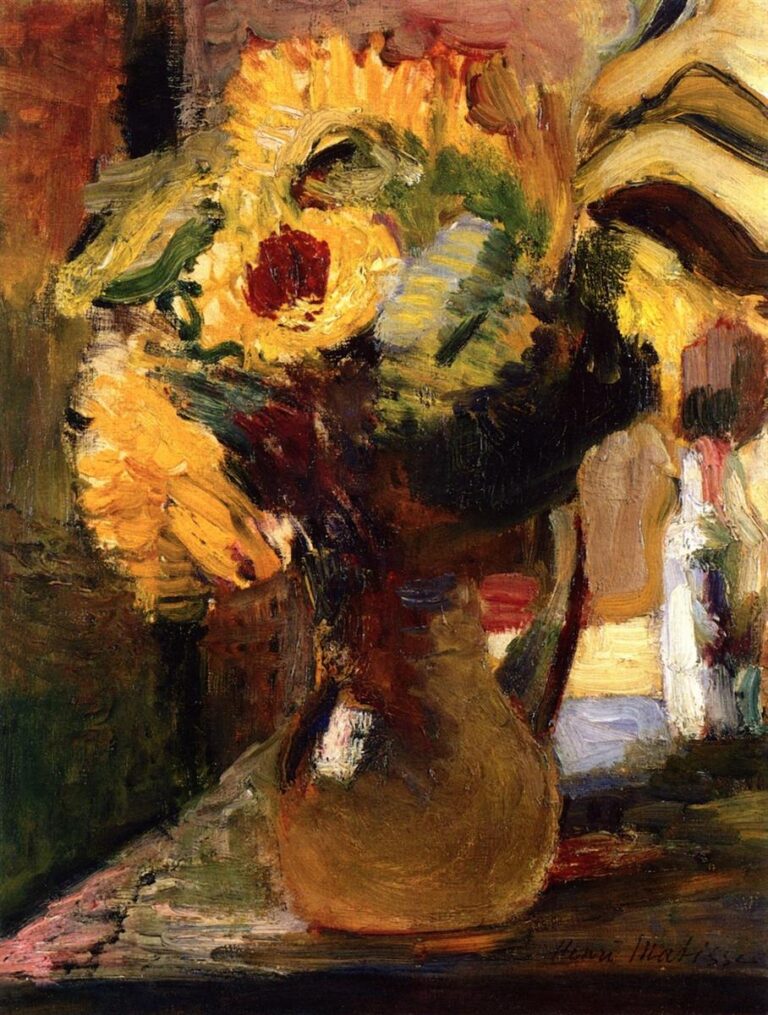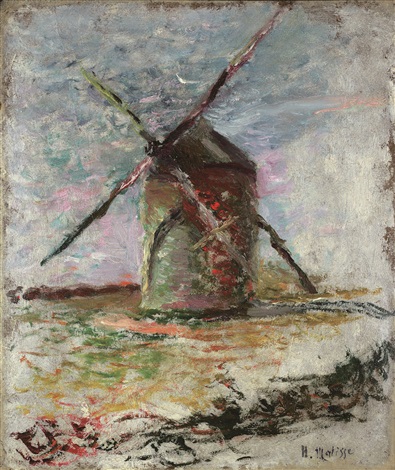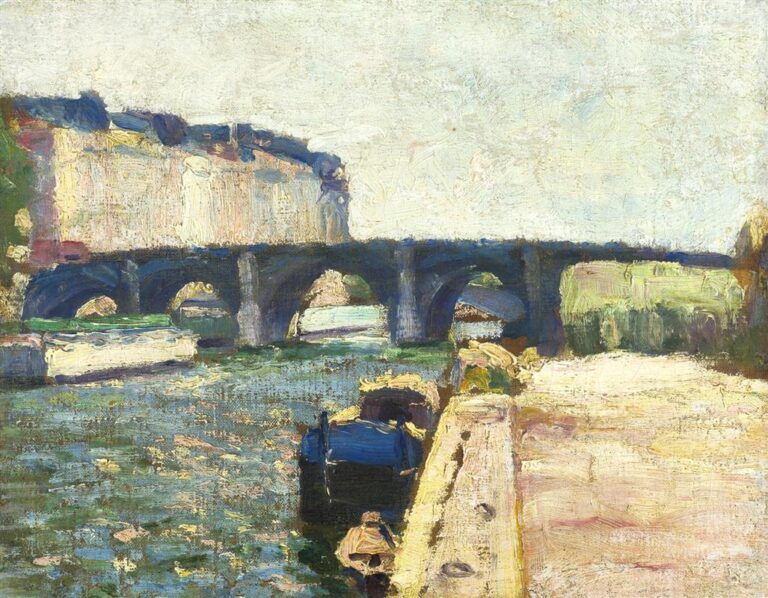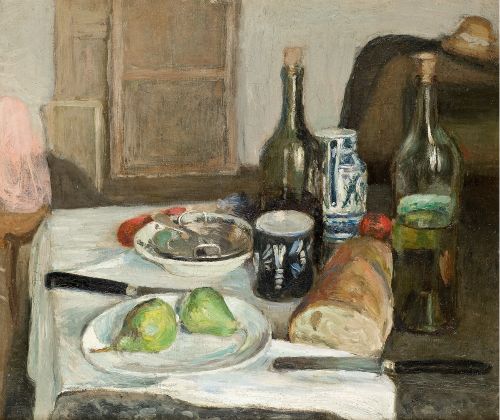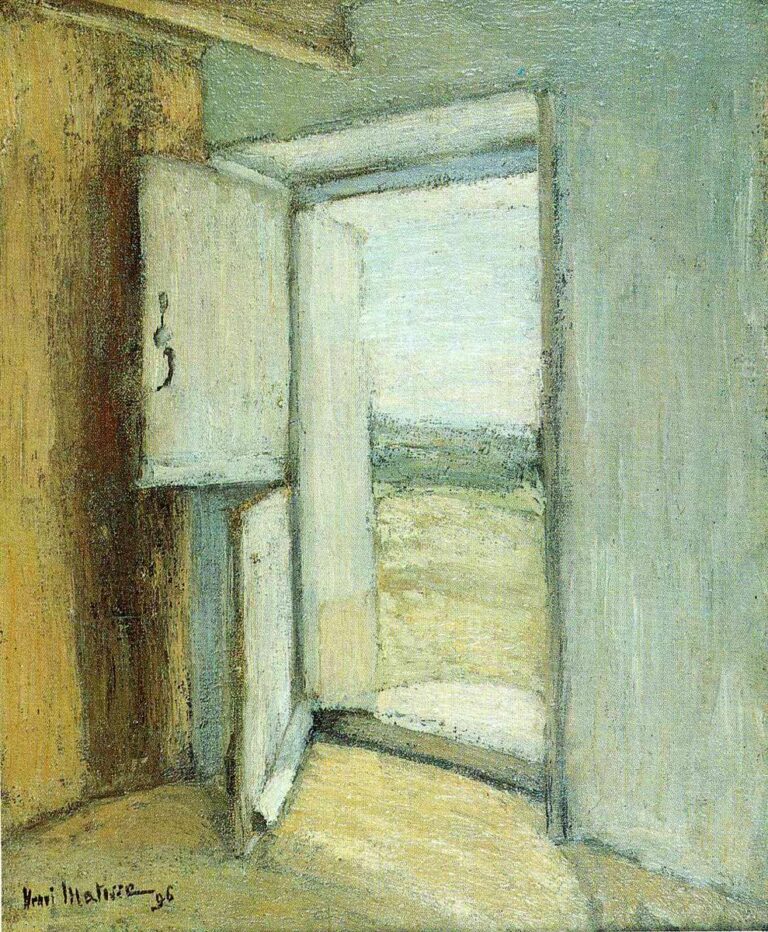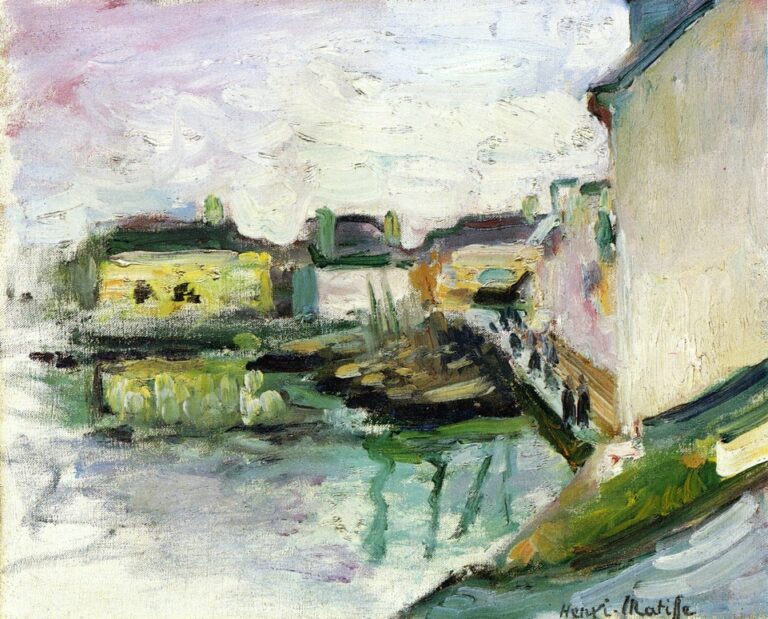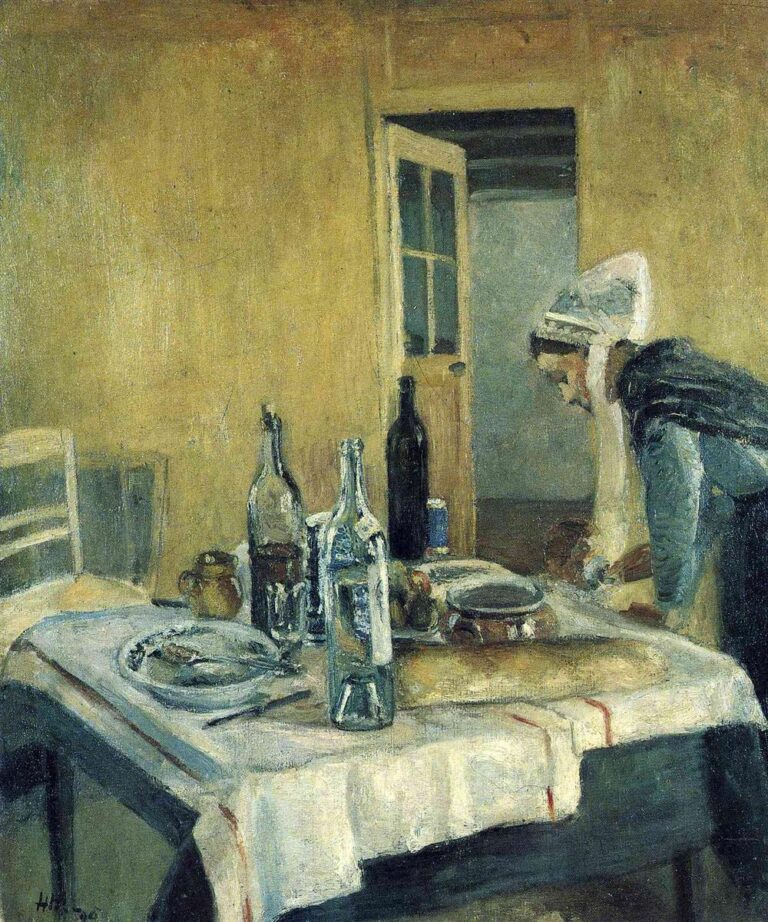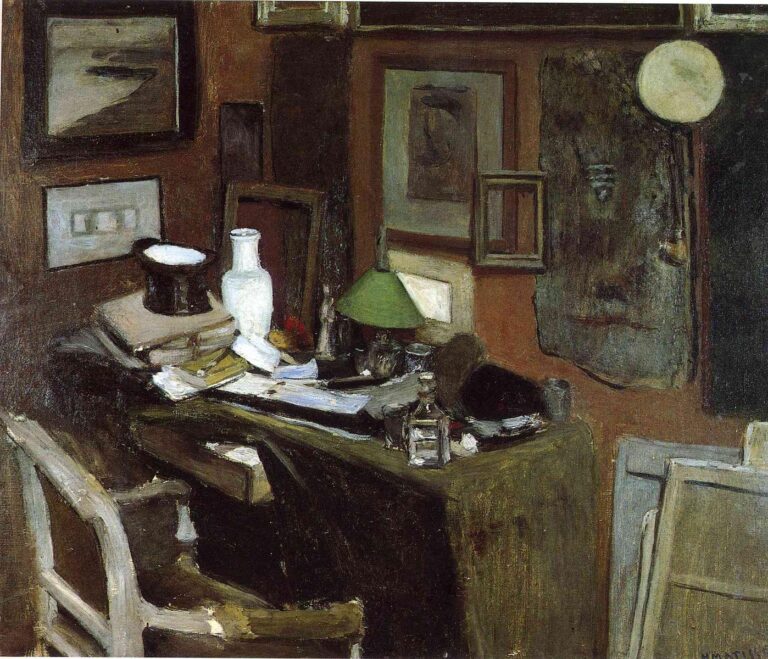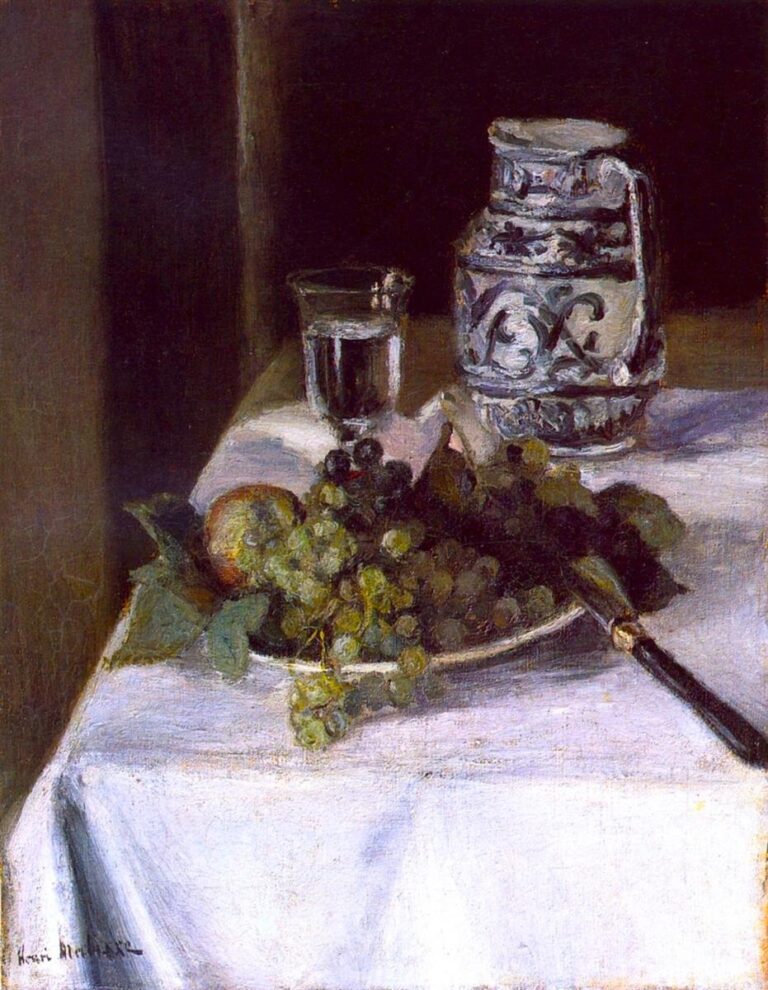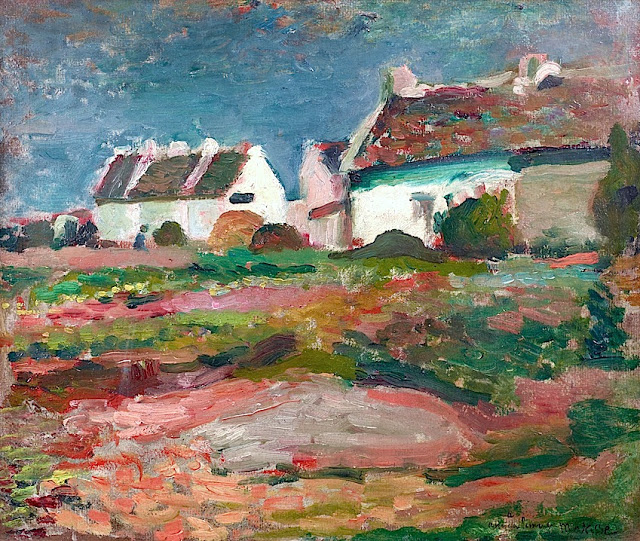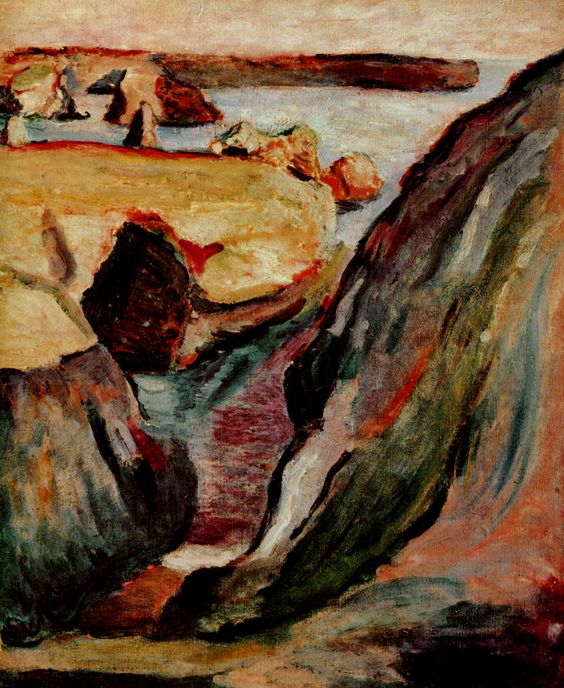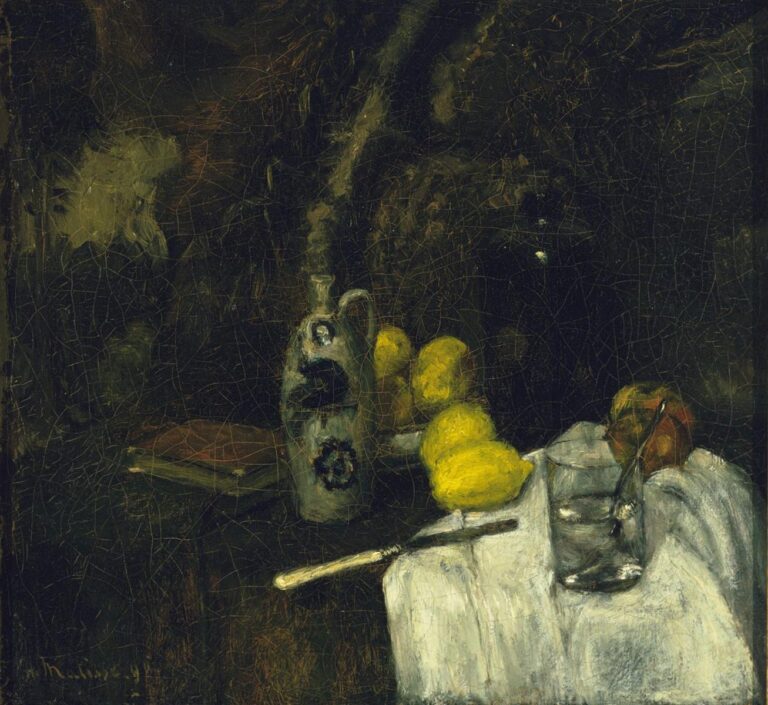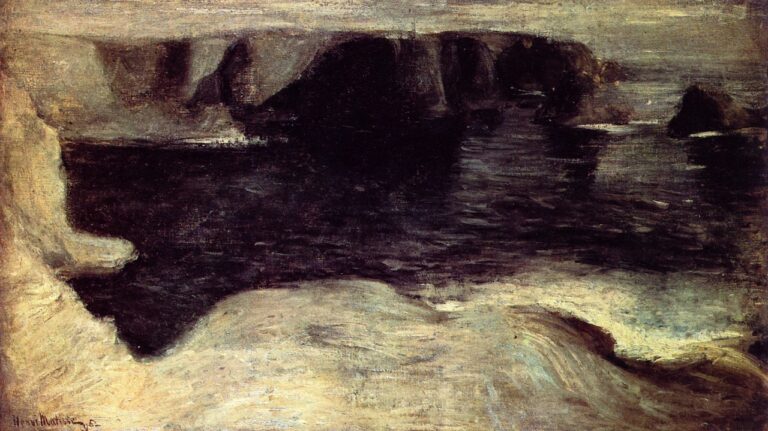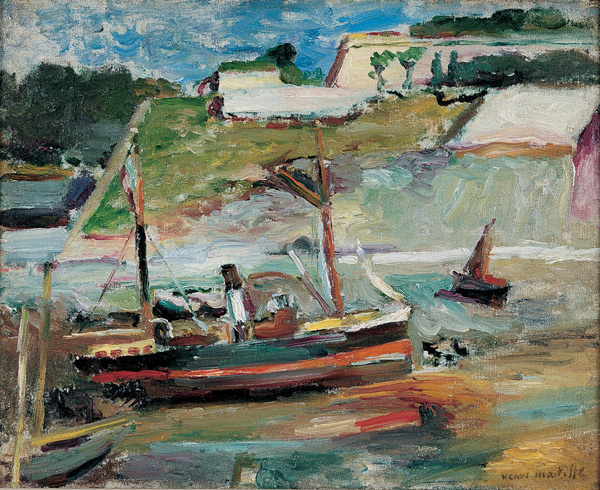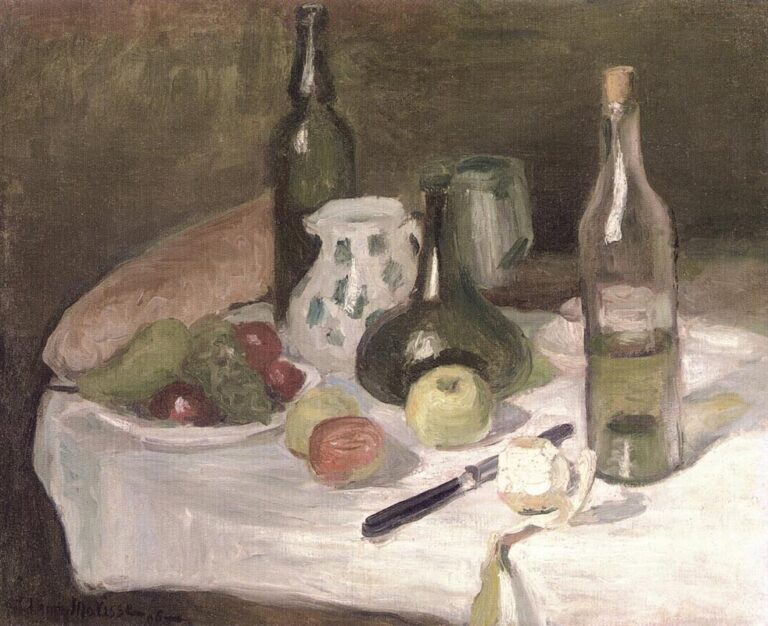A Complete Analysis of “View of Belle Île” by Henri Matisse
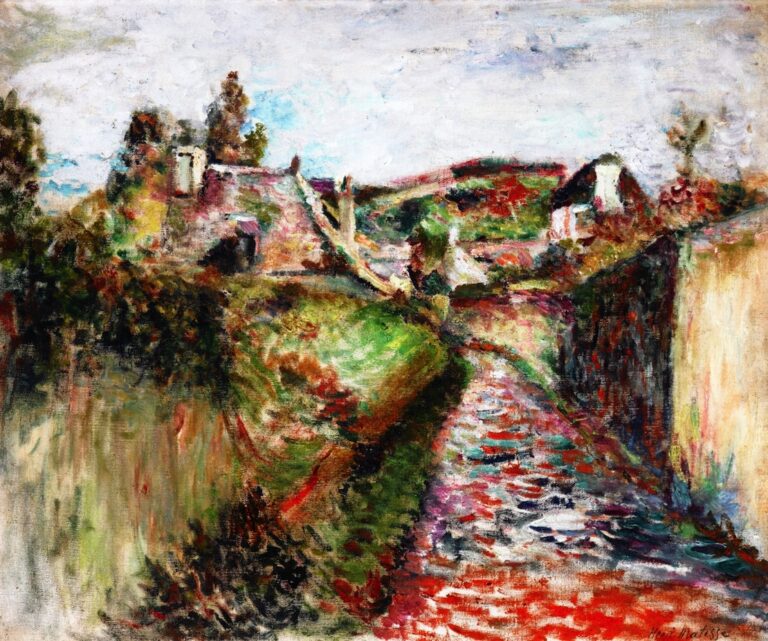
Painted in 1897, the work turns a simple Breton lane into a dynamic structure of warm reds, cool greens, and living whites. A diagonal path carries the eye inward between hedge and wall; stacked planes of field and village lead to a pale sky. Repeated, directional strokes give each substance its touch, while chromatic edges replace outline. The result is a landscape that convinces through relationships rather than detail and that foreshadows the color-driven clarity of Matisse’s later work.
